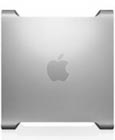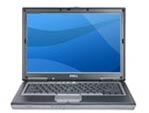Not likely.
I was driving down to the Phoenix area yesterday — my first time driving down there in months. It was a beautiful day, sunny with temperatures in the 70s. I was driving my little Honda with the top down and my iPod, connected to the stereo, blasting some classic rock. I had a 30-mile drive ahead of me on Route 60 (Grand Avenue) to get to the nearest PetSmart (or is it PetCo?), where I planned to buy some tropical fish for my aquarium. Route 60 isn’t the most pleasant road to drive on, but it’s nothing to complain about in the stretch I was driving.
I was having a good time.
My cell phone rang. The only reason I heard it is because it’s on vibrate mode and my ears were not necessary. I hit the mute button on the stereo and answered the phone.
The woman on the other end was difficult to hear at 65 mph in a convertible, so I pulled over. After all, she could be a customer for Flying M Air and I needed to hear what she wanted and to give her my full attention.
The words started coming through: QuickBooks. Book. Non-profit. How do I print checks?
It took all my patience not to explode. Apparently, this woman thought that since I’d written a book about Quicken for Windows and another book about QuickBooks for Macintosh, I could help her figure out how to print checks from the non-profit version of QuickBooks for Windows, which I had never even used, let alone written about. I don’t know where she got my phone number — it’s no longer on this site because of calls like hers — and I don’t know where she got the idea that the author of a book about a software product would be her free, technical support hotline.
I set her straight, hung up, and got back on the road. I was fuming for a short while, but the music and wind and great weather soon soothed me.
Here’s what people don’t seem to understand:
- A book’s content is determined, in part, by the book’s project editor and page count. So an author cannot include coverage of every single nuance of a software program. The least used features are left out to make sure there’s room for the most used features.
- An author cannot write a book about a topic unless the publisher feels that there’s enough of a market for the book to sell. That’s probably why this person could not find a book covering the not-for-profit version of QuickBooks for Windows. It’s also why I did not update my QuickBooks for Macintosh book to cover QuickBooks 2007 or my Quicken for Macintosh book for any version after 2003 (I think).
- An author receives, on average, less than $1 per book sold. I don’t know where anyone can get one-on-one, completely personalized technical support by telephone for $1. (Even the folks in India use a script.) My point: buying one of my books does not entitle the reader to interrupt my day by telephone to ask questions about the book’s content or topics not covered in the book at all.
- An author certainly cannot be expected to provide support for another author’s book. True story: I once got a question in my old FAQ system from someone who told me he’d bought a book by [insert author name here] and was having trouble understanding it. Could I help him? He wasn’t joking. Neither was I when I told him to contact the author of that book, not me.
This might seem like a hard line to take, but I don’t think so. I do a lot to support my work and provide content above and beyond what’s between a book’s covers. The Book Support categories you see listed near the top of the navigation bar are just an example — each one provides additional articles somehow related to a specific book. My Q & A system is also set up to receive questions that I can answer in a place where all readers can benefit from them.
That should be enough.

 I spent about 4 hours yesterday morning and another hour this morning publishing a video podcast for
I spent about 4 hours yesterday morning and another hour this morning publishing a video podcast for 

 My production Mac, which is currently a 2-year-old Dual G5 tower, is the computer I sit at when I’m writing. It has a 21″ Sony monitor (the old, heavy CRT type) which is really great when I’m doing layout on Visual QuickStart Guides and Visual QuickProject Guides. It also has all the built-in and attached equipment I need to get my job done, including three printers, a scanner, and numerous mobile devices like cameras, digital video cameras, iSight cameras, external hard disks, and more.
My production Mac, which is currently a 2-year-old Dual G5 tower, is the computer I sit at when I’m writing. It has a 21″ Sony monitor (the old, heavy CRT type) which is really great when I’m doing layout on Visual QuickStart Guides and Visual QuickProject Guides. It also has all the built-in and attached equipment I need to get my job done, including three printers, a scanner, and numerous mobile devices like cameras, digital video cameras, iSight cameras, external hard disks, and more. My Macintosh test mule, which is currently a 3- or 4-year-old G4 eMac, is the computer I run software on when I’m writing Mac books and articles. I like the all-in-one design of the eMac and the price when I bought it was within reason. When I bought it, it had the bare minimum I needed to get the job done: a G4 processor (at the time, G5 had just come out), a SuperDrive (because I often need to write about creating CDs and DVDs), built-in modem, networking capabilities, and adjustable screen resolution. When I went wireless last year, I installed an AirPort card. This computer was the machine I used to run beta Mac OS software for my Panther, Tiger, Word 2004, Excel 2004, WordPress 2, and QuickBooks 2006 books. Maybe even my Jaguar book, although I admit I can’t remember that far back.
My Macintosh test mule, which is currently a 3- or 4-year-old G4 eMac, is the computer I run software on when I’m writing Mac books and articles. I like the all-in-one design of the eMac and the price when I bought it was within reason. When I bought it, it had the bare minimum I needed to get the job done: a G4 processor (at the time, G5 had just come out), a SuperDrive (because I often need to write about creating CDs and DVDs), built-in modem, networking capabilities, and adjustable screen resolution. When I went wireless last year, I installed an AirPort card. This computer was the machine I used to run beta Mac OS software for my Panther, Tiger, Word 2004, Excel 2004, WordPress 2, and QuickBooks 2006 books. Maybe even my Jaguar book, although I admit I can’t remember that far back. My PC test mule, which is currently a Dell Latitude D820 laptop, is the computer I run Windows software on when I’m writing Windows books. (The computer recently replaced a 4-year-old Dell Dimension tower, which was really showing its age.) This computer is loaded and it isn’t by choice. As mentioned earlier in this entry, I needed souped up graphics and a fast, modern processor (or two?) to run Vista with the Aero Glass effects. It has a CD writer but not a DVD writer, although it will read both. (This became a rather ironic thing when I downloaded the Vista beta from Microsoft’s Web site and had to use my Mac to create the DVD I needed to install Vista on my PC. It worked. Of course.) I’m hoping this computer, which cost me a small fortune, will last at least four years.
My PC test mule, which is currently a Dell Latitude D820 laptop, is the computer I run Windows software on when I’m writing Windows books. (The computer recently replaced a 4-year-old Dell Dimension tower, which was really showing its age.) This computer is loaded and it isn’t by choice. As mentioned earlier in this entry, I needed souped up graphics and a fast, modern processor (or two?) to run Vista with the Aero Glass effects. It has a CD writer but not a DVD writer, although it will read both. (This became a rather ironic thing when I downloaded the Vista beta from Microsoft’s Web site and had to use my Mac to create the DVD I needed to install Vista on my PC. It worked. Of course.) I’m hoping this computer, which cost me a small fortune, will last at least four years. My business/personal laptop, which is currently a 12″ PowerBook G4, is the machine I keep at home and take on the road with me. It’s used for e-mail and blogging these days, although I sometimes use it for podcasting. And, every once in a while when I need to do a presentation, I plug it into a projection monitor and do demos. I love the size and configuration of the computer, although I admit that the 40GB (really 37 GB, but who’s counting?) hard disk is a bit small. I recently had to offload a bunch of music and podcasts just to make room for some other stuff. And with only 640 MB of RAM and 867 MHz of processing power, it sometimes slows to a crawl when taking on heavy-duty tasks like sound conversion and iMovie visual effects. I also noticed that its fan starts more frequently than usual these days, like its always hot and bothered.
My business/personal laptop, which is currently a 12″ PowerBook G4, is the machine I keep at home and take on the road with me. It’s used for e-mail and blogging these days, although I sometimes use it for podcasting. And, every once in a while when I need to do a presentation, I plug it into a projection monitor and do demos. I love the size and configuration of the computer, although I admit that the 40GB (really 37 GB, but who’s counting?) hard disk is a bit small. I recently had to offload a bunch of music and podcasts just to make room for some other stuff. And with only 640 MB of RAM and 867 MHz of processing power, it sometimes slows to a crawl when taking on heavy-duty tasks like sound conversion and iMovie visual effects. I also noticed that its fan starts more frequently than usual these days, like its always hot and bothered. In keeping with my downsizing plan, I decided that I wanted to get a Mac laptop. After struggling and finally succeeding in understanding the differences between a MacBook and a MacBook Pro, I decided on a MacBook Pro. 15″ monitor, 1 GB RAM, SuperDrive (need to write about iDVD a bit), 100 GB hard disk. This is going to be one hot computer.
In keeping with my downsizing plan, I decided that I wanted to get a Mac laptop. After struggling and finally succeeding in understanding the differences between a MacBook and a MacBook Pro, I decided on a MacBook Pro. 15″ monitor, 1 GB RAM, SuperDrive (need to write about iDVD a bit), 100 GB hard disk. This is going to be one hot computer.